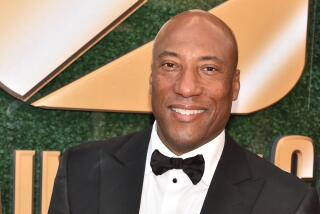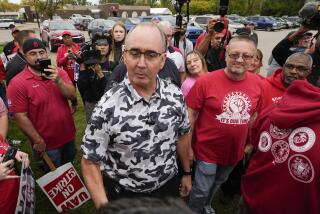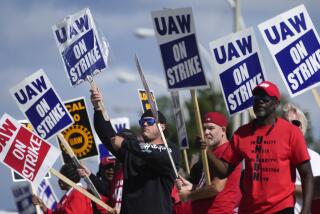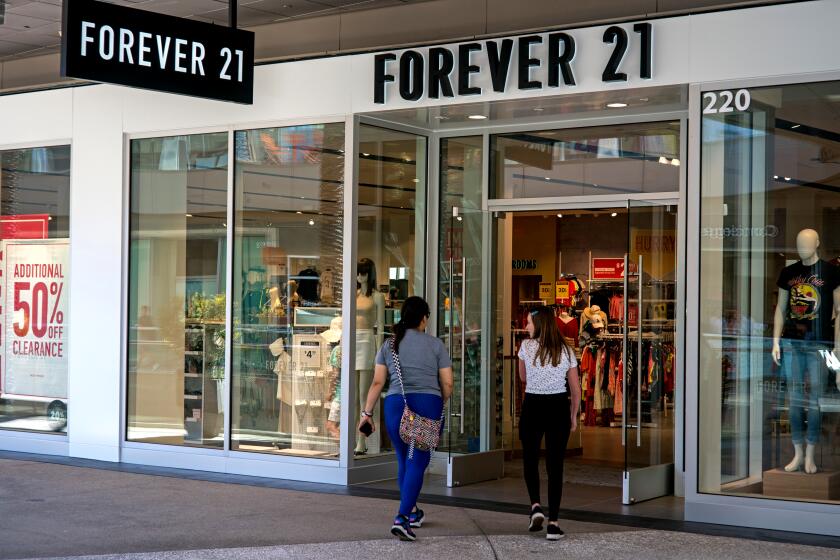United Pilots’ Buyout Offer Just Might Fly
- Share via
Are the United Airlines pilots crazy to think of buying the airline from UAL Inc., United’s diversified parent company, which also owns Hertz rent-a-car and Westin Hotels? And what makes the pilots think they can borrow the $4.5 billion they are offering to pay for the airline?
No, they’re not crazy. In fact you might say they are acting prudently in their own interest in an economy where companies are bought and restructured every day. There have been rumors recently of outside buyers accumulating the stock of UAL, which wants to change its name to Allegis. In any case, it’s a no-brainer in this day and age for smart financiers to see that you could buy all of UAL for a borrowed $4 billion or so, quickly recoup half your investment by spinning off Hertz and Westin in public stock offerings and pay off the rest from the airline’s cash flow.
In fact, no corporate raiders need apply. A company’s management could do the same thing in a leveraged buyout and wind up owning valuable assets while reaping praise for having delivered value to shareholders.
Preemptive Strike
Employees, however, usually suffer mass layoffs and other disruptions in such buyouts. So the United pilots’ offer is, in a sense, a preemptive strike, a heeding of Sgt. Jablonski’s advice on Hill Street Blues to “do it to them before they do it to us.”
The pilots, who are advised by the investment bankers Lazard Freres, evidently understand that buyouts and spinoffs continue to have an overwhelming influence on the way business is run. Despite congressional hearings and public anger--a Harris poll reporting that 70% of the American people believe that takeovers weaken the country while lining big investor pockets--the merger business is as active as ever.
There were more merger deals in the first quarter of 1987 than the 727 takeovers that occurred in the first three months of 1986, according to W. T. Grimm & Co., the Chicago brokerage house that keeps records on merger activity. Although there was a slowdown from the extraordinary fourth quarter of 1986, when more than 900 deals were done, this year’s total seems certain to surpass the 3,001 mergers completed in 1985--if not to equal the 3,336 deals, worth $173 billion, done last year. The beat goes on.
Why does it? Because there is plenty of money available and a lot of money being made--not only by corporate raiders. No, indeed. Leading business people and former public officials are in the game as backers and principals of some new small firms involved in recent big deals on Wall Street. At Blackstone Group, which is advising GAF Corp. on its $3-billion tender offer for Borg-Warner, there is Peter G. Peterson, formerly Secretary of Commerce and chairman of Lehman Bros. before its merger with Shearson-American Express.
66% Returns
At Needham & Co., there is George Needham, a former director of high-tech investments at First Boston, who set up his own shop two years ago, with financing from 36 investors, including Eugene White, chairman of Amdahl Corp., and Robert Berkowitz, a founder of Prime Computer. They have done well, earning a 66% return so far on their $80,000 to $100,000 investments.
Clients go to such small firms for ideas and guidance just as the United pilots went to Lazard Freres.
Money they can find easily from the big Wall Street investment houses or the commercial banks. Both Chase Manhattan and Citicorp are eager to finance takeovers, because merger financing pays two to three points more in interest than traditional loans to business. United’s pilots would have little trouble raising the financing if they decide to pursue their announced offer.
What all this means is that you’ll see a heck of a lot more mergers before the game is finally over. Thousands of companies are candidates for restructuring, including some of the most imposing names in U.S. industry--names like Westinghouse, USX and of course UAL.
What is happening, proclaims Richard Huber of Citicorp, is that the market is “re-allocating capital, making U.S. business more efficient.” Investors reap buyout premiums from one business, he argues, and recycle the money into more advanced industries. The market in that grand vision makes choices for the U.S. economy the way the Ministry of International Trade and Industry guides business in Japan--although whether mergers at premium prices can make U.S. business more efficient than Japanese industry remains a big, unanswered question.
Much easier to predict is when the merger game will end. Simply recall 1969, when the conglomerate wave subsided because the Federal Reserve tightened money in an overheating economy. Just so, when the Fed next attempts to tighten money, the restructuring fever will cool.
Meanwhile, there’s nothing crazy about United’s pilots responding to the world, not perhaps as it should be, but as it is.
More to Read
Inside the business of entertainment
The Wide Shot brings you news, analysis and insights on everything from streaming wars to production — and what it all means for the future.
You may occasionally receive promotional content from the Los Angeles Times.










